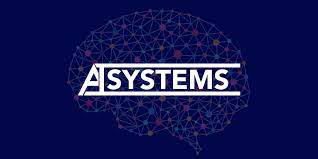Although e-commerce has existed for some time, it has recently gained attention and continues to develop rapidly. In 2020, the global e-commerce industry is worth 3.67 trillion U.S. dollars and is expected to grow by 10.67 trillion U.S. dollars between 2021 and 2025. Although technology seems to have a major impact, it is not the driving factor. With the forced digital dependence brought about by the covid-19 pandemic, the growing digital population seems to be a key growth factor in the coming years.
Although no one can predict the future, here are some signs that can help detect e-commerce trends in the next five to ten years.
Mobile commerce
Even with so many retail channels, mobile commerce is still a buyer's favorite, accounting for more than 70% of all online sales, and may grow even more. Although some people associate e-commerce with online shopping, it is also used for online banking, buying and selling goods, and even paying utility bills.
E-commerce is expected to provide retailers with better opportunities, increased revenue and enhanced customer buying experience. In addition, as its global popularity increases, it is expected to dominate non-mobile commerce in the next few years. Therefore, it is not surprising that mobile commerce revenue is expected to exceed US$270 billion by 2025.

Delivery drone
UAVs are unmanned aerial vehicles, or more simply, flying robots that can be programmed to perform simple tasks. But you ask, what is the relationship between e-commerce and flying robots? Marketing experts believe that drone-driven solutions will become more convenient in the future, replacing humans and delivery drivers.
Due to its speed and efficiency, delivery drones will reduce delivery time and cut order delivery time by half. This will not only reduce labor costs, but also improve customer service, which will benefit e-commerce companies.
Artificial Intelligence System
Although most companies already use artificial intelligence systems such as chatbots, they are likely to dominate e-commerce in the next few years. Whether it's increasing productivity, improving customer experience, or automating repetitive processes, artificial intelligence integration helps companies achieve their goals.
With the development of artificial intelligence, future artificial intelligence assistants are expected to be faster and more efficient in various tasks, including answering consumer questions, automatic payments, and processing orders and inventory.

Increase touch points
In addition to improving delivery services, future e-commerce will increase the use of customer touch points, such as food self-service, voice menus, and smart applications. Services such as online ordering and pick-up in local stores (BOPIS) were triggered by the new coronavirus-19 but have gradually been adopted by most retailers and buyers.
In addition, since 2020, curbside pickup has also jumped to US$72.5 billion, and is expected to reach 20% of the overall grocery retail in the next five years. Nowadays, most retail stores have installed contactless self-checkout systems, and other retail stores are expected to follow up soon.
conclusion
E-commerce will have a significant impact on our society in the next few years. With a better shopping experience, 24-hour online store, safer digital transactions, and products at your fingertips, e-commerce will continue to make customers' lives easier. The combination of low operating expenses and low-cost products is still a win-win situation for all stakeholders.